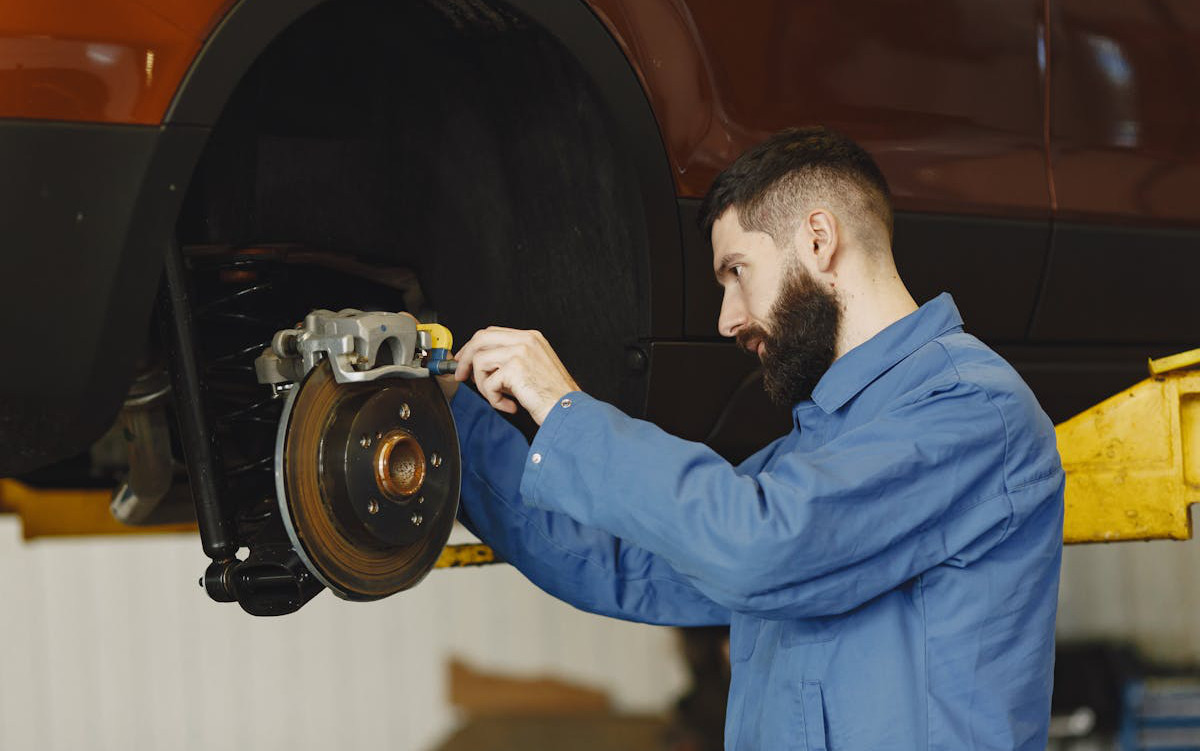
When you’re involved in a car accident, you might blame the other driver for negligence. But what happens when the accident stems from a car defect, not a driver error? Vehicle defects, although not common, can affect car owners. The National Motor Vehicle Crash Causation Survey reported that vehicle defects caused or contributed to 5,470 crashes between 2005 and 2007.
Do you suspect your accident was caused by a defective part? At Hauptman, O’Brien, Wolf & Lathrop, LLC, we help clients determine when car manufacturers can be held liable. Our experienced legal team offers free case reviews. Contact a Hauptman, O’Brien, Wolf & Lathrop, LLC lawyer today to help you navigate your product liability case.
How Car Manufacturers Become Liable for Vehicle-Related Accidents
Product liability laws hold manufacturers responsible for injuries caused by unreasonably dangerous products, including defective vehicles. These legal principles exist because manufacturers know how to assemble their products for safe use. Thus, manufacturers are responsible for avoiding dangerous defects at all costs.
Who Is to Blame for a Defect?
The responsibility isn’t always with the manufacturer alone. It may involve multiple parties in the supply chain.
When a defective part causes an accident, the following parties may share responsibility:
- The original vehicle manufacturers
- The parts suppliers and component manufacturers
- The distributors and wholesale dealers
- The retail dealers who sold the vehicle
Strict Liability for the Manufacturer’s Defect
Courts apply strict liability standards to defective product cases. This means that manufacturers can be held responsible even without proof of negligence. With strict liability in place, whether or not the manufacturer acted carelessly is less of a factor.
The courts focus on whether the product was unreasonably dangerous. Victims don’t need to prove the manufacturer knew about the specific defect or acted negligently. They only need to show that the defect existed and caused their accident. This makes it much easier for accident victims to recover fair compensation.
Manufacturing Defects That Create Liability
Manufacturing defects happen when the final vehicles produced differ from the intended design. These flaws make the vehicles particularly dangerous because customers don’t expect them. People can’t be cautious of flaws they don’t know exist.
Common defects that create manufacturer liability include:
- Brake system failures from improperly assembled parts or contaminated fluids
- Steering system defects with loose connections or faulty power steering parts
- Engine problems causing sudden acceleration or stalling in traffic
- Faulty welds in critical structural components
- Contaminated materials used in safety systems
Design Defects and the Manufacturer’s Responsibility
Design defects can affect entire vehicle fleets. If a design flaw exists in the original plans, the rest of the fleet will have that imperfection.
Manufacturers are responsible for fixing these design problems before selling their vehicles:
- Vehicles that tip over too easily because they’re top-heavy
- Vehicles with fuel tanks in dangerous spots that cause fires in crashes
- Vehicles with seat belts and safety features that don’t work in accidents
- Vehicles with weak frames that crush too easily in crashes
- Vehicles with airbags that don’t work properly in accidents
Manufacturers must make sure their vehicles are reasonably safe. They cannot just meet the bare minimum legal standards.
What You Must Prove in Design Defect Cases
Design defect cases claim that the vehicle’s blueprint itself is dangerous, not just one bad part. You must show that the entire vehicle model has a design that puts drivers at unreasonable risk. The key is to prove that a safer design existed when your vehicle was made.
To win a design defect case, you need to prove that:
- A safer alternative design was available and practical at the time
- The manufacturer knew or should have known the design was dangerous
- The dangerous design directly caused your accident
- Other accidents happened because of the same design problem, and;
- The cost of the safer design wouldn’t have been unreasonable
These cases often take longer to develop, since they involve challenging the fundamental design of the vehicle. This is different from a specific manufacturing error where one part was made wrong.
When Manufacturers Face Liability for Poor Warnings
Car companies can be held liable when they don’t tell customers about known dangers with their vehicles. Even if a car has no defects in how it was built or designed, manufacturers still must warn people about risks.
Hazardous Situations That Manufacturers Should Avoid
Manufacturers need to give clear instructions on how to use and maintain the vehicle safely. Common warning problems include:
- Delayed recall notices that allow people to keep driving unsafe cars
- Unclear repair instructions that don’t properly address safety issues
- Failing to issue warnings about known problems with vehicle systems
- Poor maintenance instructions that could prevent failures
- Missing warnings about the proper use of safety features
The Manufacturer’s Responsibility After the Car Is Sold
Manufacturers even have duties to you after they sell you the car. They must act quickly to protect consumers once they learn about safety issues.
Federal law requires manufacturers to report safety defects to the National Highway Traffic Safety Administration within 5 days of learning about them. They must also notify vehicle owners within 60 days of filing the report. When manufacturers miss these deadlines, it strengthens your case for holding them liable for your accident.
Once a defect is found, the manufacturers may have to recall the product and provide compensation. In less serious cases, manufacturers might simply give retailers and customers clear repair instructions. When they don’t do this properly, they can be liable for accidents that better warnings could have prevented.
What You Must Prove to Hold a Manufacturer Liable
You need to prove that a better, safer design or model is possible in order to win a manufacturer defect case. You must also show that your injuries would have been prevented if the same problem had not existed with your vehicle.
The exact evidence needed to prove these points depends on which type of defect caused your accident. However, certain basics apply to all cases.
You have to prove the following:
- The defect existed when the vehicle left the manufacturer’s control
- This defect directly caused your accident and injuries
- The vehicle was used as intended or in a reasonably foreseeable way at the time of the accident
- The vehicle had not been significantly altered in a way that contributed to the defect or your injuries
Evidence Needed for Manufacturing Defect Claims
Gathering evidence for a product liability case can be a difficult task. There are several pieces of evidence needed to prove that the defect caused your injuries.
Evidence may include:
- Physical examination of the failed component by qualified experts
- Comparison with properly manufactured parts from similar vehicles
- Analysis of manufacturing records and quality control procedures
- Documentation showing the defect existed before the accident
- Witness testimony about how the vehicle behaved before the failure
Manufacturers don’t just give out their secrets to anyone who claims a defect. If you were injured because of a suspected defect, contact a lawyer. Experienced product liability lawyers can obtain this information on your behalf.
Types of Damages Available for Product Defect Cases
Compensation in manufacturer liability cases can include several types of damages:
- Medical expenses for current and future treatment needs
- Lost wages and reduced earning capacity from your injuries
- Pain and suffering from physical injuries and emotional trauma
- Property damage to your vehicle and personal belongings
- Punitive damages when the manufacturer’s conduct was particularly bad
The calculation of these damages often involves complex economic analysis. This is especially true for future medical needs and lost earning capacity.
How Manufacturer Liability Affects Your Compensation
When a car manufacturer is held liable for your accident, your compensation can be much higher than a typical car crash settlement.
Several factors can increase your payout in manufacturer cases:
- Manufacturers carry millions in product liability insurance coverage
- Manufacturers may face punitive damages when they ignore known dangers
- Manufacturers can be sued alongside other at-fault drivers for maximum recovery
- Manufacturers have substantial resources that courts consider when setting awards
- Manufacturers face higher damages when internal documents show they chose profits over safety
When a defective car part causes your injuries, you may sue multiple companies at once. The law treats all parties who contributed to the harm caused as equally responsible for the defective product. Having multiple sources to collect from increases your chances of getting full compensation.
Insurance Company Tactics in Manufacturer Cases
Manufacturer insurance companies use different strategies than regular car insurance companies. Common tactics include:
- Offering quick settlements before you understand your full injuries
- Blaming poor vehicle maintenance for the defect
- Claiming driver error caused the accident, not the defect
- Delaying the case to pressure you into accepting less money
- Using their own experts to dispute your evidence
Once you sign their papers, you usually can’t go back for more money later. So hold off on accepting a settlement from them. Speak to a lawyer first.
When to File Your Manufacturer Liability Claim
Time limits are strict in product liability cases against manufacturers. Most states give you between 1 and 3 years from the date of your accident to file a lawsuit. However, the clock might start from when you discovered the defect, not when the accident happened. This is called the “discovery rule.”
Several factors can affect your filing deadline:
- Hidden defects may extend your filing time
- Manufacturer cover-ups may pause the legal clock
- Ignored recalls may hurt your case timing
- Evidence collection may require months of work
- Witness memories may fade without quick action
Don’t wait to get legal help. Gathering evidence takes time, and witnesses’ memories fade quickly.
Get the Legal Help You Need for Your Manufacturer Liability Case
Car manufacturers have vast resources and experienced legal teams defending against liability claims. You shouldn’t face these corporate giants alone. When their defective products have caused you harm, call Hauptman, O’Brien, Wolf & Lathrop, LLC.
At Hauptman, O’Brien, Wolf & Lathrop, LLC, we level the playing field. We bring the same level of expertise and dedication to your case that manufacturers use to defend theirs. Our single focus is protecting you, and your healthy recovery is our top priority.
Contact us today for your free case review. We serve clients throughout Omaha, Sarpy County, Nebraska, and Iowa. Our team will evaluate your accident and determine if manufacturer liability applies. Remember, you pay nothing unless we win your case.


David O’Neill at Hauptman, O’Brien Personal Injury Lawyers handled both of our cases and did excellent work. He communicates clearly, explains every step, returns calls, and follows through. Both cases moved forward smoothly with no confusion and no wasted time. If you need a personal injury attorney, contact David O’Neill because you will feel informed and supported from start to finish.